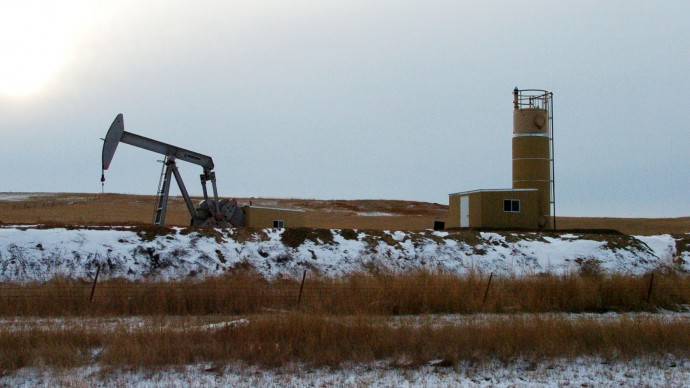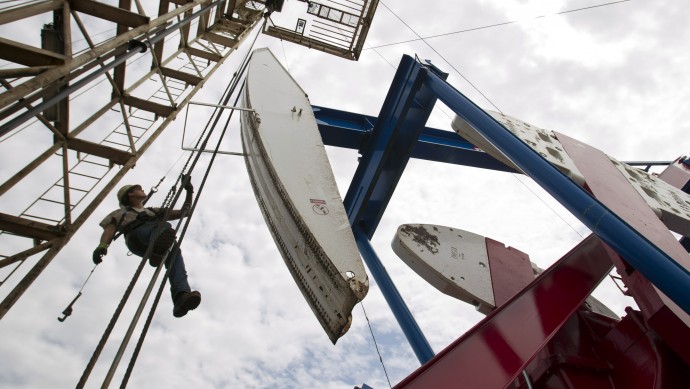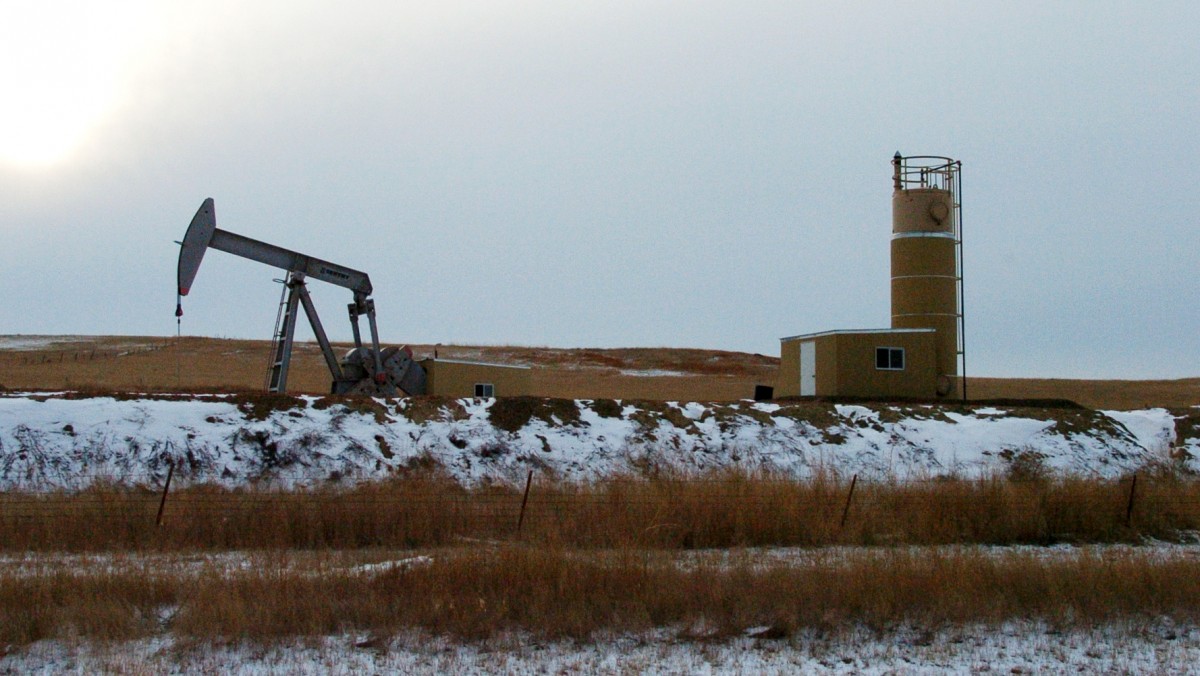
(MintPress) – In Williston, N.D. — home of the Miss North Dakota Pageant — the town found itself in the midst of extreme good fortune. In the town that the 2010 census listed as having 16,006 residents, the population is now over 30,000 — only a year and a half after the official tabulation was released. In what is now seen as the fastest growing small city in America, things have changed quickly in a short amount of time.
There are more jobs than people to fill them. From January 2010 to September 2011, Williams County created more than 12,000 jobs, as reported in the Williston Herald (Williams County only has 22,398 residents, according to the 2010 census). The average weekly paycheck for the community in 2011 is almost $1,400, or about $71,000 per year.
The second most-affluent county in North Dakota is Stark County, with an average personal income of under $1,000 per week.
There has been a building boom in the area that is among the largest in the state’s history. Established businesses are expanding, new businesses are moving in, and with each passing day, the landscape becomes more and more densely populated.
Williston sits on top of the Bakken formation, the most active oil producing site in the United States. North Dakota currently estimates that the total yield of recoverable oil in this formation to be about 18 billion barrels, although various reports estimate the range to be between 3 billion and 24 billion barrels. Over a 640 square miles oilfield, four drills are estimated to be installed or to be planned per square mile. While oil production seemingly plateaued in 2010, the introduction of new wells (such as the ones near Williston) is keeping supply up, with a daily production around 145 barrels per well.
However, this boom came at a high cost. There is a housing shortage, with a single bedroom apartment going for $2,000-$2,500 per month. There’s a drought of day care, preventing mothers from working. The average pay is higher than average for the state, but most of the jobs are low-paying food service and retail jobs that fail to meet the high cost-of-living.
The town is failing to keep up with the boom and is being buried by it. Water supplies are stretched, sewage systems are overwhelmed, much of the labor force is homeless — until recently, the local Wal-Mart allowed tents and mobile housing to be pitched in its parking lot, and it is not uncommon to see people sleeping in their cars — and there is a true difficulty in maintaining the workforce for the low-paying jobs, as those who would work the jobs cannot afford to live in Williston.
Williston is not alone. Nearby Watford doubled its population in two years — from 3,000 to 6,500 — and is suffering from growing pains similar to Williston. Throughout the nation, hundreds of small communities have been flushed with billions in oil revenue in part due to the rush to cash on short-term land leases to oil-drilling companies, which use induced hydraulic fracturing — or hydrofracking — to express shale oil from shale deposits. Recently, the potential of the shale oil deposits have been revealed to make the United States energy-independent by 2020, and the lure of possible trillions of dollars in energy profit with the patriotic appeal of no longer being dependent on foreign petroleum shipments have made hydrofracking the modern equivalent of the gold rush.
However, the drive for oil may have a higher cost than anticipated.
Induced hydraulic fracturing works by introducing a fracking fluid — a gel, foam or slickwater-based fluid that may contain hydrochloric acid, acetic acid, radioactive isotopes, guar gum, biocides, emulsifiers, diesel fuel and/or emulsion breakers — at a rate high enough to increase the downward pressure on the shale rock formation and encourage fracturing of the rock mass. Proppant is injected into the fractured shaft to stabilize it as the fluids continue to shatter the shale. The fracking fluids, shattered shale and released oil is extracted from the well, the oil is harvested and the process repeats.
This process is problematic as there is the possibility of groundwater contamination in the high-pressure release and recycling of highly-toxic fracking fluid. Groundwater contamination is also possible from the surface release of fuel from trucks and excavation equipment.
Hydrogeologist Harvey Cohen of S.S. Papadopulos & Associates told ScienceDaily, “When people talk about contamination from hydraulic fracturing, for instance, they can mean a lot of different things. When it’s what’s happening near their homes, they can mean trucks, drilling machinery, noise.”
Cohen argues that the fracking fluid lost to hydrofracking is minimal and isolated, and groundwater contamination can be definitively traced through the use of radioactive trackers.
However, other researchers feel that the amount of contaminants that can possibly be leaked into the groundwater can be much greater. Daniel Rozell, P.E., a doctoral student, and Dr. Sheldon Reaven, associate professor and director of energy and environmental systems concentration in the Department of Technology and Society at Stony Brook University — in their paper titled “Water Pollution Risk Associated With Natural Gas Extraction from the Marcellus Shale” — project, “Even in a best case scenario, an individual well would potentially release at least 200 m3 of contaminated fluids.”
The disposal of the large amount of fracking wastewater expected to be produced exceeds in risks from salts and radioactive materials “several orders of magnitude larger” than other potential water pollution pathways, such as the spilling of the contents of a tanker truck that was carrying fracking fluids, the direct and immediate failure of the well casing, improper handling of storage facilities leading to surface spills and fluids traveling through underground fractures to groundwater sources.
In the Eastern United States, the Marcellus Shale — a massive shale rock formation stretching from New York to West Virginia — has been hydrofracked for years toward the harvesting of natural gas. The positioning of the Onondaga Shale and the Tully Limestone in relations to the Marcellus Shale created large pockets of valuable natural gas.
Prior to 2000, wells dug into the shale produced low-yield, but long-lived harvests, with some wells being active well over 50 years. Within the last 10 years, however, directional hydrofracking has been used to expand the drilling capability and harvest yields of the natural gas wells. Within the shale, it is estimated that 363 trillion cubic feet of recoverable natural gas lies, enough to satisfy the United States for 14 years.

However, as with shale oil hydrofracking, the threats to the groundwater is clear. As of October 2011, hydrofracking was banned in the city of Syracuse, N.Y. and the city’s watershed area, and the city is currently seeking to expand the ban to the watershed area of the city’s major waterbody, Onondaga Lake. Along with Syracuse, the cities of Buffalo, New York City, Binghamton and Auburn, N.Y., and Pittsburgh, Penn., the counties of Ulster, Ontario, Onondaga, Putnam, Westchester, Tompkins, Cortland, and Sullivan, N.Y., and nearly 100 towns and villages in New York and Pennsylvania have outlawed hydrofracking.
In the western Pennsylvania-border area of New York — known as the Southern Tier — the question of hydrofracking is more delicate and a great deal more complicated. Unlike most of New York State, this region is considerably poor, particularly in consideration of the surrounding area. The increase in jobs and revenue is desperately needed in the area, but concerns about overlapping watersheds and the possibility of large-scale groundwater contamination has made hydrofracking in the Southern Tier a political hot-potato. With the technology meant to be utilized for the Southern Tier wells yet to be approved by the state, Gov. Andrew Cuomo (D-N.Y.) is seeking to allow drilling, but on a highly limited basis.
The question of whether the economic boom of this new energy bonanza is worth the environmental cost is a difficult one to answer. Dr. David McClough is the assistant professor of economics for Ohio Northern University. In discussion with MintPress, McClough suggested that the answer of this question is very likely “no.”
“The scientific community has only begun to study the issue, so fracking will advance with or without knowledge of the consequences.”
In discussing the earthquakes last year in Northeast Ohio, “Those quakes are linked directly to the fracking process in which I include the creation and operation of injection wells used to dispose of the water and chemicals used in ‘fracking.’
“When calculating the costs and benefits, we can anticipate that many of the costs will be omitted from the calculation because they are not incurred directly in the ‘fracking’ process. For example, enormous quantities of water need to be trucked in to accommodate the process. These trucks obviously omit carbon pollution and create additional use on roads that were not designed for such traffic. The water and chemicals have to transported away as well.
“The communities are unlikely prepared to handle the infusion of so many temporary workers and the consequences will not be obvious, although we can probably look to history to give some indication.”
McClough used the gas and oil boom of Ohio in the 19th century: “The influx of workers disrupted the social order. Records reveal more instances of public drunkenness, fights and crime. The smaller communities had neither the police nor courts to handle the increase.
“Economists refer to costs and benefits accruing outside the market transaction as externalities. Pollution and secondhand smoke are examples of negative externalities. Positive externalities exist as well. Advocates of increased ‘fracking’ will argue that investment leads to high paying jobs and tax dollars for communities at a time when both are needed.
“It is not clear whether the benefits exceed the costs but what is clear is that the industry will expend significant resources to secure regulations and laws that secure the greatest possible profit.”
The greatest agreed detriment, however, is that this boom is temporary. The leases to the wells are short-term, the oil and natural gas supply is finite, and eventually, the output from the drilling efforts will no longer justify the material and labor costs. At that time, these boom towns must deal with the collapse of local economy.
“Another issue few people mention is that the growth is exciting but it ends,” said McClough. “As communities actively support the growth, much of the costs are pushed into the future with the expectation of increased tax revenue resulting from the growth. In reality, the growth ends and it is not likely that the situation plateaus.
“Rather, once the infrastructure is created, the investment and the workers go away. I use the metaphor of the circus coming to town. People are excited when the advanced promotion makes them aware of the circus arrival. Everyone has a great time attending the circus. Then, the circus leaves, the people have spent their money, and all they have left of memories and a bit of a mess to clean up.”
This, however, is not a consensus. Robert Horner, an energy and environmental policy analyst with the Argonne National Laboratory, said to MintPress, “It is likely that most of the risks to water and air, including the ones that are best understood, can be effectively mitigated through proper industry practice and regulation.
“This is not to say that shale gas development is completely safe or environmentally benign, that industry best practices and regulation can eliminate risk or that current regulation is necessarily enough.
“Should the public be more concerned? Existing limits on shale gas development, increasing regulation and public demonstrations suggest that the public is already concerned. The decision of whether the economic benefits are worth the possible environment, health and safety costs can only be made by the stakeholders involved.”


